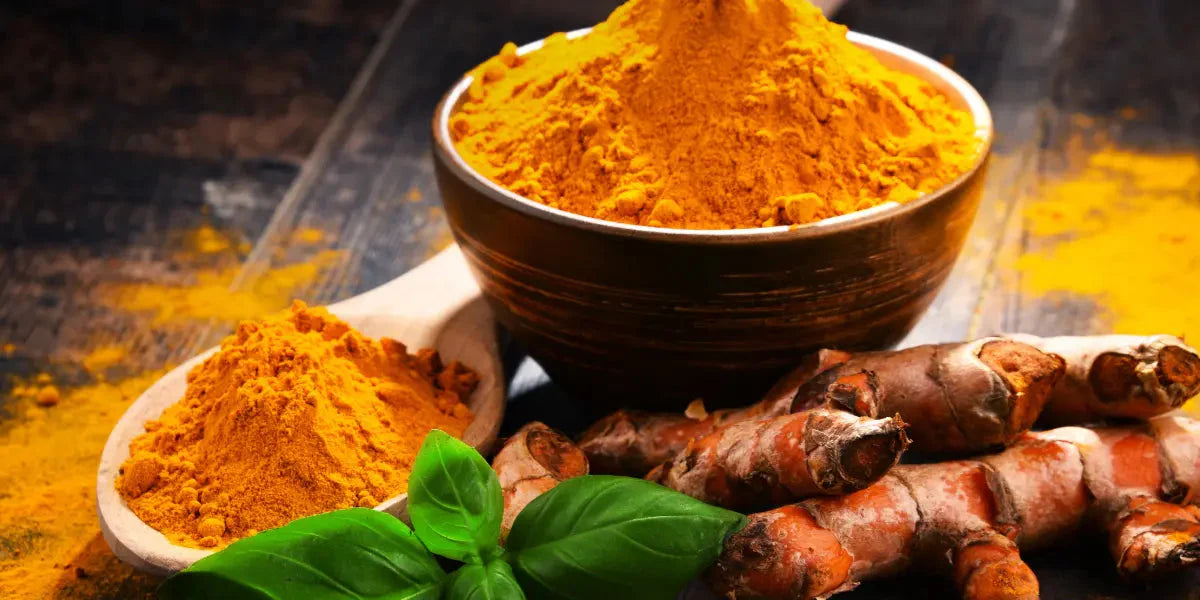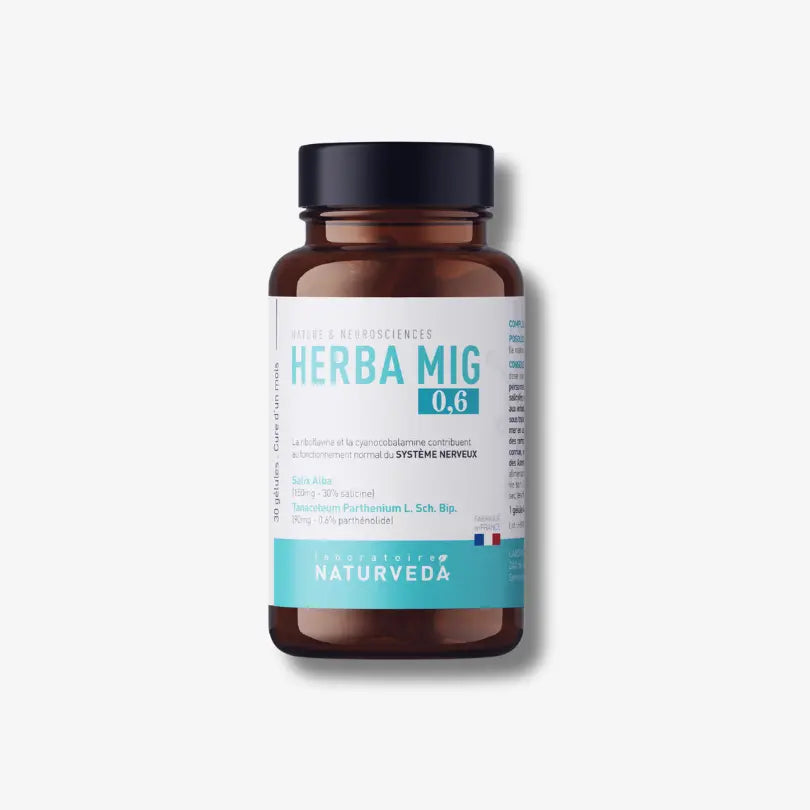This golden-hued spice, used for centuries in Ayurvedic medicine and traditional Indian cuisine, turmeric is not only limited to its role as a coloring and flavoring agent. Indeed, this root is of interest to more and more people today because of its health benefits . But then what are they? Thanks to this article, discover the virtues of turmeric!
Turmeric
Turmeric, like curry or paprika for example, is one of these spices present in the kitchen. But do you really know what it is, how it is cultivated and in what forms to obtain it? The answers to this question in this first part.
What is turmeric?
Turmeric is an herbaceous plant that belongs to the ginger family (Zingiberaceae) . The part of the plant we use today is the root, called the rhizome . The latter is harvested and dried , before being transformed into a fine orange-yellow powder , known as turmeric.
Turmeric is grown mainly in tropical regions of South Asia , notably in India, Sri Lanka and Indonesia, but also in certain parts of Africa . It needs a warm and humid climate to be able to develop properly. The plant grows from rhizomes planted in the ground, and is typically harvested after about 7 to 9 months of growth.
Then, harvesting turmeric is simply done by pulling out the underground roots . Once harvested, the roots are washed, boiled, dried in the sun and then ground to obtain the turmeric powder we are all familiar with today. In this process, the drying phase is crucial because it stabilizes both the color and flavor of the turmeric.
In what forms can I obtain it?
Today, turmeric is available in different forms, which allows everyone to consume it as they wish. And you can get it at most grocery and health food stores. To give you some ideas, here is a list of common forms in which turmeric can be found:
- Turmeric powder: undoubtedly the most common form, it is the one most used in cooking. You will generally find it in the spice section of any store (supermarket or not).
- Turmeric root: In some regions, you can also find fresh turmeric root. In this form, it is often used to make juice or added to fresh dishes (it often has more flavor than the powder).
- Curcumin capsules: Curcumin is the active ingredient in turmeric. You can find curcumin supplements in capsule form at health food stores or pharmacies and drugstores.
- Turmeric tea: Some tea blends contain turmeric, frequently combined with other herbs and spices. Like any other tea, you will easily find it in supermarkets, natural stores or even stores specializing in tea.
And whatever form of consumption you choose, make sure you opt for quality sources of turmeric, in order to guarantee its benefits and qualities.

The benefits of turmeric
Turmeric is a spice with multiple health benefits . This is because of its active compounds, particularly curcumin . Here are some of the potential benefits of turmeric.
As a reminder, this information is based on ongoing research, and results may vary from person to person.
Anti-inflammatory and antioxidant properties
First of all, turmeric is a plant appreciated because of its anti-inflammatory and antioxidant properties:
- Anti-inflammatory: Curcumin exhibits anti-inflammatory properties that can help reduce inflammation in the body. Which makes turmeric interesting in particular for people suffering from inflammatory diseases such as arthritis.
- Powerful Antioxidant: Curcumin also acts as a powerful antioxidant, helping to neutralize free radicals. Free radicals can cause cellular damage, contributing to premature aging and various diseases.
Benefits for the brain and nervous system
Turmeric also has benefits for the brain and nervous system, at all ages:
- Improved brain function: Curcumin can cross the blood-brain barrier, so it could have beneficial effects on the brain.
- Prevention of neurodegenerative diseases : Studies suggest that curcumin may help prevent, slow or treat neurodegenerative diseases such as Alzheimer's disease.
Digestive and metabolic well-being
Furthermore, turmeric also contributes to digestive and metabolic well-being:
- Digestive support: Turmeric can stimulate bile production, which aids digestion . It is therefore often used to relieve digestive problems and help treat certain gastrointestinal disorders.
- Diabetes management: According to some studies, curcumin may help regulate blood sugar levels, which is particularly beneficial for people with type 2 diabetes.
General therapeutic properties
Finally, like other plants, turmeric also has various therapeutic properties:
- Anti-cancer potential: Although some more research is needed on the subject, curcumin may have anti-cancer properties (help prevent or treat cancer) by interfering with several stages of cancer cell development.
- Anti-infectious properties: Additionally, turmeric has antibacterial, antiviral and antifungal properties that could help strengthen the immune system and fight infections.
- Skin benefits: icing on the cake, applied topically, turmeric can also have anti-inflammatory and antioxidant properties that are beneficial for the skin. It is also sometimes used in facial masks and other treatments (such as this complex with essential oils intended to treat acne).
In short, turmeric is a very interesting spice because of its range of health benefits. From anti-inflammatory qualities to its potential in diabetes management and even cancer prevention , this golden root indeed offers a multitude of reasons to incorporate it into our daily lives. Adopt this ancient spice to discover all its rich and diverse benefits!






